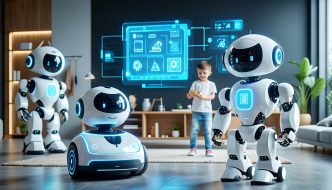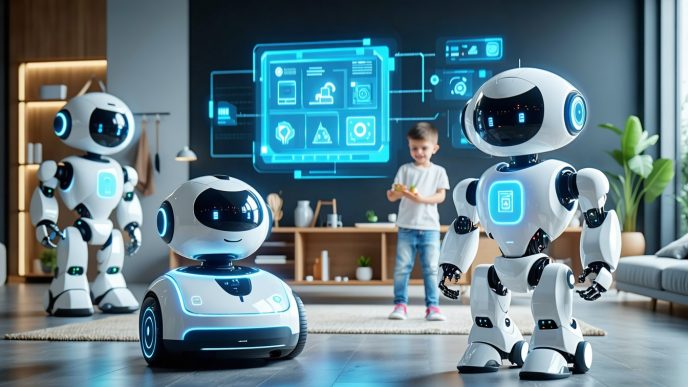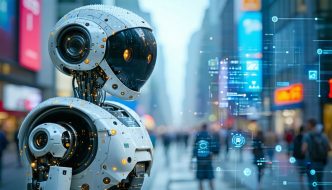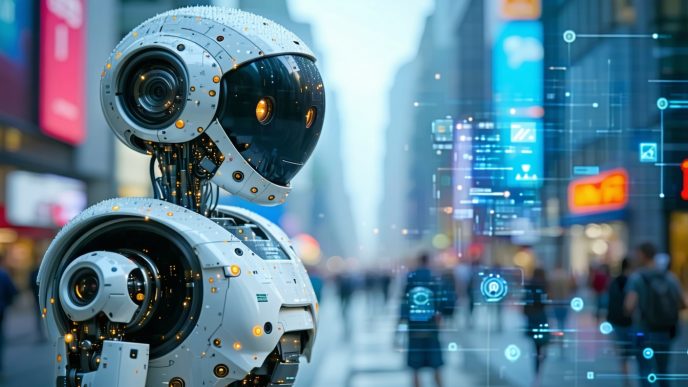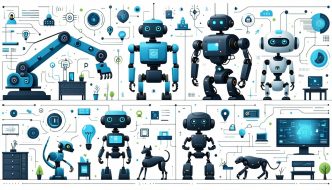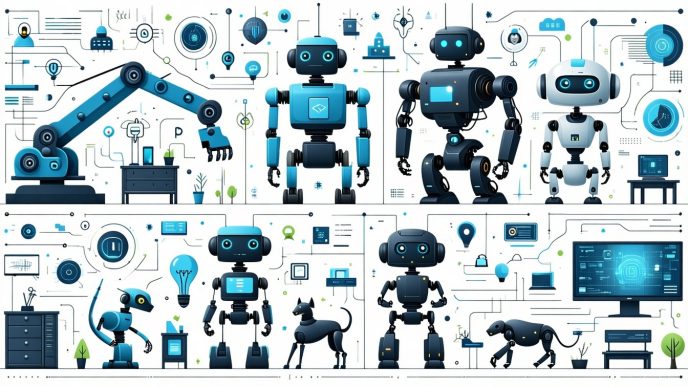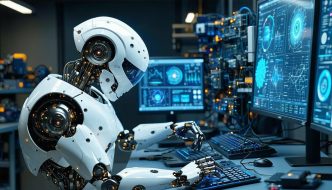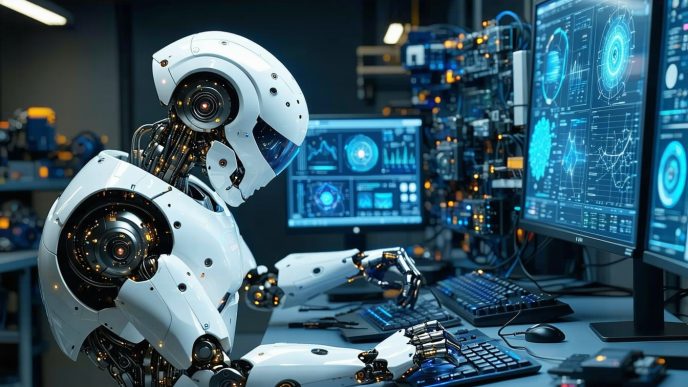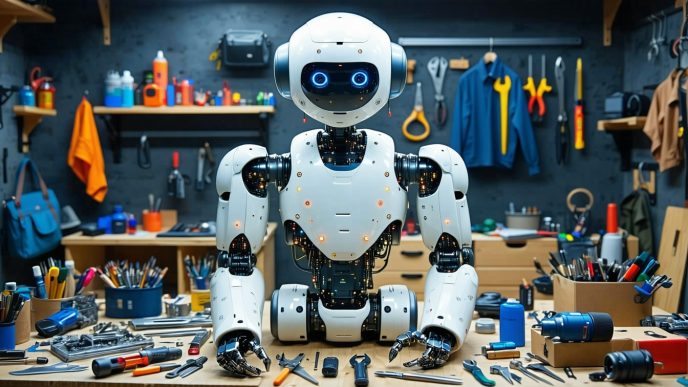Understanding Humanoid Robots
Definition of Humanoid Robots
Humanoid robots are machines designed to resemble the human form. They typically exhibit a head, torso, two arms, and two legs, enabling them to interact more naturally with humans and navigate human environments. These robots are created with a combination of mechanical components, electronic systems, and software programming to perform various tasks. Humanoid robots fall into different categories based on their purpose, including those developed for home use, education, companionship, and professional applications.
| Feature | Description |
|---|---|
| Structure | Human-like shape and proportions |
| Mobility | Capable of walking, running, or even climbing |
| Interaction | Equipped with sensors for communication and perception |
| Purpose | Varies from caregiving to security roles |
For examples of humanoid robots in various fields, you can explore models such as the Xiaomi CyberOne and Sanctuary AI Phoenix.
Role and Function of Humanoid Robots
Humanoid robots serve multiple functions across various sectors. Their primary roles include:
- Assistance: Many humanoid robots are designed to help with daily tasks, such as household chores, making them valuable in smart homes. Their ability to navigate and manipulate objects allows them to assist individuals with routine activities.
- Companionship: These robots can provide social interaction, particularly for the elderly or individuals who may experience loneliness. Programs integrated with emotional recognition make it possible for them to respond to human emotions.
- Education: Humanoid robots can be employed as educational tools, engaging students in interactive learning. They can explain topics, assist with programming lessons, and enhance student engagement.
- Healthcare: In healthcare settings, humanoid robots can support medical professionals by assisting in patient care, providing information, and even monitoring patient conditions.
- Security: Some humanoid robots are programmed to oversee security in buildings or areas, utilizing navigation and surveillance technologies to ensure safety.
The life expectancy of humanoid robots, known as humanoid robot lifespan, can vary significantly depending on the applications they are designed for and the technology used. Factors influencing this lifespan will be discussed later in this article.
For detailed examples of humanoid robots, consider looking into models like the Tesla Optimus and Apptronik Apollo.
Lifespan of Humanoid Robots
Determining the lifespan of humanoid robots involves evaluating various factors that can influence how long these machines will operate effectively. Understanding these components is essential for potential users and developers alike.
Factors Influencing Lifespan
Several key factors significantly impact the lifespan of humanoid robots. These include the quality of materials used, the complexity of design, and the frequency of maintenance. Below are some primary factors that contribute to the longevity of a humanoid robot:
| Factor | Description |
|---|---|
| Quality of Components | High-quality materials and parts tend to last longer. |
| Usage Frequency | More frequent use can lead to faster wear and tear. |
| Environmental Conditions | Humanoid robots exposed to harsh conditions may deteriorate faster. |
| Maintenance Practices | Regular inspection and upkeep can prolong a robot’s life. |
| Technological Advances | Upgrades can extend function but may also require adaptation. |
These variables collectively shape the operational lifespan of humanoid robots and can greatly differ based on individual robot designs such as those found in popular models like sanctuary ai phoenix or xiaomi cyberone.
General Lifespan Expectancy
The expected lifespan of humanoid robots varies widely based on their specific purpose and design complexity. General lifespan expectancy can range from a few years to over a decade. The table below outlines average lifetimes based on various types of humanoid robots:
| Robot Type | Average Lifespan (Years) |
|---|---|
| Basic Consumer Robots | 3-5 |
| Advanced Research Robots | 5-10 |
| Service Robots for Healthcare or Home | 8-12 |
| Industrial Humanoid Robots | 10-15 |
Understanding the expected longevity of humanoid robots helps users make informed decisions regarding maintenance, upgrades, and replacements. For more insights on humanoid robot maintenance, visit our article on humanoid robot maintenance.
Mechanical Components
Mechanical components are vital to the functionality and durability of humanoid robots. The joints and movement systems are essential for their physical actions, while the wear and tear on these components can significantly influence their overall lifespan.
Joints and Movement Systems
Humanoid robots feature several joints and movement systems that allow them to replicate human-like motions. The complexity of these joints can vary based on the design and purpose of the robot. Most robots incorporate a combination of servo motors and actuators to facilitate movement, enabling them to walk, gesture, and interact with their environment.
The performance of joints is influenced by factors such as the material used and the design. High-quality materials can enhance durability and help decrease failure rates. Typical types of joints utilized in humanoid robots include:
| Joint Type | Functionality | Lifespan Expectancy (Cycles) |
|---|---|---|
| Rotary Joints | Rotate to facilitate turning and movement | 10,000 – 50,000 |
| Linear Joints | Move in a straight line for tasks like reaching | 10,000 – 30,000 |
| Flexible Joints | Allow for bending, mimicking human flexibility | 5,000 – 20,000 |
To maintain optimal performance, it is essential to regularly inspect and maintain these components.
Wear and Tear on Mechanical Parts
Wear and tear can significantly impact the humanoid robot lifespan. As robots engage in repetitive movements, components can become degraded over time. Common issues include joint stiffness, loss of precision, and mechanical failures.
Factors contributing to wear and tear include:
- Frequency of Use: Robots used regularly may experience faster degradation.
- Operating Environment: Dust, moisture, and temperature fluctuations can affect component longevity.
- Load Capacity: Overworking joints and motors by carrying excessive weight can lead to quicker wear.
Maintenance practices, such as lubrication, can mitigate wear. Regular checks of the movement systems are crucial for identifying potential issues early. For robot owners, being aware of the necessary upkeep can enhance the overall humanoid robot lifespan.
Understanding the mechanical components and their maintenance is essential for ensuring that humanoid robots function effectively and last longer.
Electrical Components
Humanoid robots rely on various electrical components to perform their functions. These components include sensors, feedback systems, and power supply units, which play a crucial role in determining the overall robot lifespan.
Sensors and Feedback Systems
Sensors are integral to humanoid robots, enabling them to interact effectively with their environment. They provide real-time data and feedback, which is essential for tasks such as navigation, obstacle detection, and user interaction.
Common types of sensors found in humanoid robots include:
| Sensor Type | Functionality |
|---|---|
| Proximity Sensors | Detect nearby objects |
| Cameras | Enable vision and recognition |
| Touch Sensors | Sense physical contact |
| Temperature Sensors | Measure environmental and internal temperatures |
Sensors typically have a limited lifespan influenced by factors such as usage frequency and environmental conditions. Regular software updates can enhance sensor functionality and longevity. For information on sensor types, see our article on humanoid robot sensors.
Power Supply and Battery Life
The power supply system of a humanoid robot is vital for its operation. Most humanoid robots are powered by rechargeable batteries, which can vary in type, size, and capacity. Battery life is a critical aspect of the robot’s overall lifespan, impacting how long it can operate before needing a recharge or replacement.
| Battery Type | Average Lifespan | Factors Affecting Longevity |
|---|---|---|
| Lithium-ion | 2-3 years | Charge cycles, temperature, usage |
| Nickel-metal hydride | 1-2 years | Charge cycles, deep discharges |
| Lead-acid | 1-3 years | Maintenance, environmental factors |
The efficient management of power consumption is essential for maintaining battery life. Implementing advanced charging systems, such as those designed for humanoid robot charging systems, can extend the operational hours of humanoid robots. Regular check-ups are recommended to assess battery health and replace any failing components to ensure optimal performance.
Understanding the electrical components and their impact on the humanoid robot lifespan can guide users in making informed decisions about maintenance and usage. This knowledge aids in enhancing the long-term viability and functionality of these advanced machines.
Software and Programming
Software and programming play a vital role in determining the lifespan of humanoid robots. Updates and upgrades directly influence performance, functionality, and durability.
Importance of Software Updates
Keeping the software of humanoid robots up-to-date is essential to enhancing their capabilities and ensuring smooth operation. Software updates can fix bugs, improve functionalities, and introduce new features that optimize performance. Regular updates help maintain the robot’s relevance and efficiency in executing its tasks, which can ultimately extend its operational lifespan.
The frequency of updates can depend on various factors, including the specific robot model and its application area. For example, humanoid robots used for healthcare may require more frequent updates compared to others used for simple tasks around the house. Below is a table showing the general update frequency based on robot type:
| Robot Type | Update Frequency |
|---|---|
| Humanoid Robots for Home Use | Every 3-6 months |
| Humanoid Robots in Healthcare | Every 1-2 months |
| Humanoid Robots for Education | Every 6 months |
| Humanoid Robots for Security | Quarterly |
Risks of Outdated Systems
Outdated software systems can lead to various issues that may compromise the lifespan of humanoid robots. One significant risk is decreased performance due to unpatched vulnerabilities and bugs. This can cause the robot to malfunction or operate inefficiently, leading to wear and tear on its mechanical components.
Additionally, outdated software can result in incompatibility with new hardware or external systems. If the robot cannot integrate with these resources, its functional capabilities may become limited, leading to earlier retirement. Moreover, outdated bots may lack essential safety features, which can pose risks during operation.
The implications of using outdated systems highlight the importance of proactive maintenance and regular software updates. Owners should prioritize staying informed about available updates and scheduling time for installations. For more information on maintaining humanoid robots, refer to our article on humanoid robot maintenance.
Maintenance and Upkeep
Maintaining humanoid robots is essential for prolonging their lifespan and ensuring optimal performance. Regular upkeep can help prevent malfunctions and extend the usability of these advanced machines.
Regular Maintenance Practices
Routine maintenance practices play a significant role in the longevity of humanoid robots. Key maintenance tasks include:
| Maintenance Task | Frequency |
|---|---|
| Inspecting mechanical joints | Weekly |
| Cleaning sensors and cameras | Bi-weekly |
| Testing software updates | Monthly |
| Checking battery health | Monthly |
| Lubricating moving parts | Every 3 months |
By following a consistent maintenance schedule, owners can prevent wear and extend the functionality of their robots. Regular inspections help identify potential issues early, allowing for timely interventions.
Repair and Replacement Considerations
Eventually, some components of a humanoid robot may wear out and require repair or replacement. Understanding which parts are likely to need attention can help in planning maintenance and ensuring minimal downtime. Common repair and replacement considerations include:
| Component | Lifespan | Repair/Replacement Consideration |
|---|---|---|
| Mechanical joints | 3-5 years | May require greasing or replacement |
| Sensors | 3-7 years | Calibration and replacement if malfunctioning |
| Power supply | 2-5 years | Regular checks for efficiency; replace when worn |
| Batteries | 1-3 years | Monitoring for capacity; replacement when degraded |
Planning for repairs and replacements allows for improved robot lifespan. Regular evaluations assist in determining which part needs servicing and help maintain operational efficiency. For more insights on the overall upkeep of humanoid robots, check out our article on humanoid robot maintenance.
End of Lifespan
Humanoid robots, like any machine, have a finite operational lifespan. Understanding the signs of deterioration and the appropriate disposal methods is vital for responsible management of these robotic systems.
Signs of Deterioration
As humanoid robots age, several physical and operational signs may indicate that they are nearing the end of their effective lifespan. These include:
| Sign of Deterioration | Description |
|---|---|
| Mechanical Malfunction | Joints may become stiff or unresponsive, affecting movement. |
| Sensor Failure | Inaccuracies in feedback systems leading to poor navigation and interaction capabilities. |
| Software Glitches | Frequent crashes or slow responses in programming may signal outdated systems. |
| Battery Life Reduction | Shortening run times when charged, indicating diminished battery capacity. |
| Physical Wear | Visible damage or degradation of exterior components may also occur. |
These signs suggest a need for evaluation and possible intervention, such as repairs or upgrades, to prolong function. For extensive care practices, see our article on humanoid robot maintenance.
Disposal and Recycle Options
When a humanoid robot reaches its end of usefulness, proper disposal and recycling become essential to minimize environmental impact and comply with regulations. Several options exist for the retirement of these robots:
| Disposal Option | Description |
|---|---|
| Recycling | Dismantling and recycling metal, plastic, and electronic components, ensuring sustainable waste management. |
| Donation | Functional robots may be donated to educational institutions or research facilities for training or testing purposes. |
| Hazardous Waste Management | Special procedures should be followed for the disposal of batteries and electronic parts to prevent environmental contamination. |
Responsible disposal methods not only protect the environment but also provide opportunities for repurposing robotic technologies. For more details on advanced humanoid robots and their applications, including educational uses, refer to articles like humanoid robots for education and humanoid robots for home use.



